Dengue virus type 3 isolated from a fatal case with visceral complications induces enhanced proinflammatory responses and apoptosis of human dendritic cells
- PMID: 21450836
- PMCID: PMC3094967
- DOI: 10.1128/JVI.01915-10
Dengue virus type 3 isolated from a fatal case with visceral complications induces enhanced proinflammatory responses and apoptosis of human dendritic cells
Abstract
A recent (2007 to 2009) dengue outbreak caused by dengue virus (DENV) in Paraguay presented unusual severe clinical outcomes associated with 50% mortality rates. Although it has been reported that inflammatory responses influence the severity of dengue virus infection (T. Pang, M. J. Cardosa, and M. G. Guzman, Immunol. Cell Biol. 85:43-45, 2007), there remains a paucity of information on virus-innate immunity interactions influencing clinical outcome. Using human dendritic cells from a major innate immune cell population as an in vitro model, we have investigated signature cytokine responses as well as infectivity-replicative profiles of DENV clinical isolates from either a nonfatal case of classical dengue fever (strain DENV3/290; isolated in Brazil in 2002) or a fatal case of dengue fever with visceral complications isolated in Paraguay in 2007 (strain DENV3/5532). Strain DENV3/5532 was found to display significantly higher replicative ability than DENV3/290 in monocyte-derived dendritic cells (mdDCs). In addition, compared to DENV3/290 results, mdDCs exposed to DENV3/5532 showed increased production of proinflammatory cytokines associated with higher rates of programmed cell death, as shown by annexin V staining. The observed phenotype was due to viral replication, and tumor necrosis factor alpha (TNF-α) appears to exert a protective effect on virus-induced mdDC apoptosis. These results suggest that the DENV3/5532 strain isolated from the fatal case replicates within human dendritic cells, modulating cell survival and synthesis of inflammatory mediators.
Figures
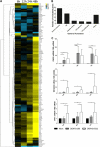
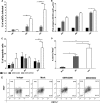
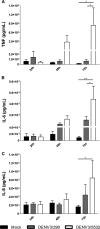
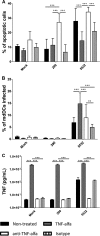
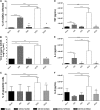
References
-
- Cardier J. E., et al. 2005. Proinflammatory factors present in sera from patients with acute dengue infection induce activation and apoptosis of human microvascular endothelial cells: possible role of TNF-α in endothelial cell damage in dengue. Cytokine 6:359–365 - PubMed
-
- Clark G. G., Crabbs C. L., Bailey C. L., Calisher C. H., Craig G. B., Jr 1986. Identification of Aedes campestris from New Mexico: with notes on the isolation of western equine encephalitis and other arboviruses. J. Am. Mosq. Control. Assoc. 2:529–534 - PubMed
Publication types
MeSH terms
Substances
Associated data
- Actions
LinkOut - more resources
Full Text Sources
Medical
Molecular Biology Databases

